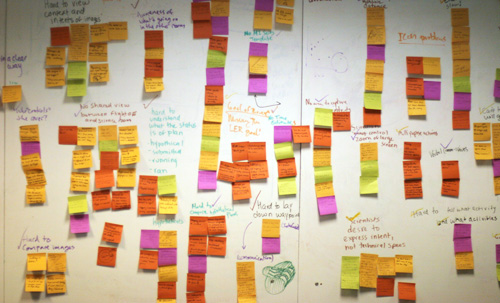
Design Process

We followed an iterative design process involving many rounds of brainstorming, rapid prototyping and user testing in order to continually refine the interface's functionality and feature set. We began by translating our research findings into specific needs within robotic reconnaissance planning, and generating ideas based on those needs. To test our design concepts, we created storyboards and presented them to users and stakeholders. We then created low-fidelity paper prototypes and performed think aloud studies to evaluate the success of the interactions'. Next, we created a digital prototype, and performed additional think aloud studies to assess the tool's usability and refine the interaction for each feature. Finally, we tested the digital prototype in more formal scenarios called Operational Readiness Tests (ORTs) in order to prepare for the final “landing day” simulation.
